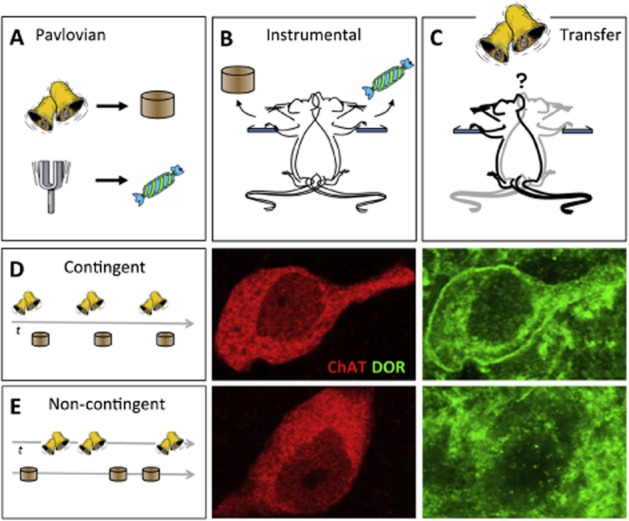Figure 2.

The role of a δ opioid receptor (DOR)-related process in specific PIT. (A–C) Design of specific PIT experiments. Rats or mice are given Pavlovian training (A) in which two stimuli (here a tone or bell) are paired with different foods (grain pellets or sugar). They are then given instrumental training (B) in which they learn to press different levers to earn the same outcomes (here left lever → pellet, right lever → sugar). The transfer test (C) is conducted in extinction (i.e. without food delivery) in which the stimuli are presented and the rats are allowed to choose between the two levers. (D, E) δ receptor activity, labelled for eGFP (green) in the somatic membrane of cholinergic interneurons, labelled for choline acetyl transferase (ChAT (red) in the accumbens shell reflects the strength of the contingency encoded between CS and US and the degree of PIT (D). Breaking the Pavlovian contingency by presenting the CS and US randomly on independent time (t) series and, therefore, in a ‘Non-contingent’ manner reduces δ receptor expression on the membrane of cholinergic interneurons compared to ‘Contingent’ Pavlovian training (E). CS, conditioned stimulus; US, unconditioned stimulus.
